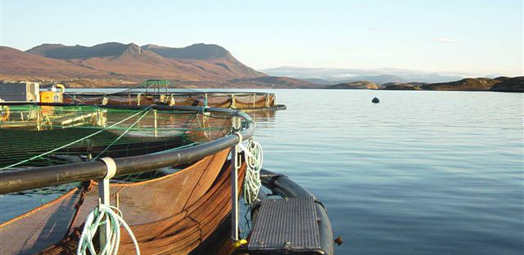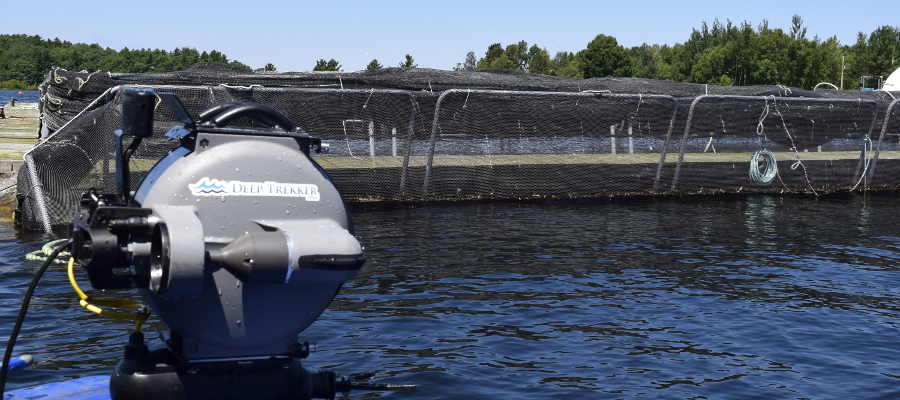Configure Now
Items in Your Cart0
0Items in Your Cart
Start building your packageShop Now
Two of Scotland’s leading fish farming companies have helped to close the cycle of ballan wrasse – successfully breeding from farm-raised broodstock.

Scotland’s leading fish farm companies have been working to breed wild-caught ballan wrasse and raise the offspring from egg to adults of reproductive age.
Now, in what is believed to be a world first, those same offspring have produced their own eggs, completing the lifecycle of farming wrasse in a controlled environment. This has led to successfully weaning the wrasse larvae and fry from live food to a dry diet. This marks a key milestone for aquaculture specialists and one that will give salmon farmers more control over the health and nutrition of farmed wrasse.
Read more: Scotland Aquaculture | Industry Review and Outlook
Ballan wrasse provides highly effective, highly natural sea lice control and as such are in huge demand. With this, breeding, weaning, and rearing wrasse will help ensure farmers have a more secure, controllable supply and reduce reliance on wild stocks. As the global demand for seafood continues to rise, the need for a flourishing aquaculture industry is vital in providing a source of high-quality protein.
Read more: Fish Farms – Inspections Below the Surface

Deep Trekker’ remotely operated vehicles (ROVs) are designed to provide an environmentally friendly and cost-effective way for fish farms to monitor and inspect subsurface infrastructure. Designed for portability, Deep Trekker ROVs are equipped with internal batteries which dismisses the need for topside generators. Not only is it easier to move from pen to pen, it also eliminates the risk of contaminating the water with unwarranted fuel leaks or spills.
A safer and more easily-deployable alternative to commercial and staff divers, Deep Trekker ROVs provide operators with a reliable way to perform a wide variety of tasks around the farm. With an ROV, operators can easily make net inspections a part of their daily routine to quickly monitor the daily wear and tear that can cause fish escapes, but also to identify holes when pest incursions are suspected. Often fish farms are located in rural and remote areas that are hard to reach. These days, many commercial dive teams are unwilling or unable to get to remote sites in a reasonable amount of time. If you suspect you have a hole in your net, the easiest way to find out is to deploy a DTG3, which can be done in less than 30 seconds.
A Deep Trekker ROV can also be used to monitor fish health. Sampling is time-consuming and raises the cortisol level of fish. At certain times of the year when oxygen levels are lower, farms try to minimize handling to prevent loss. A DTG3 is a useful alternative to help assess fish health, while not meaningfully affecting cortisol levels. The new DTG3 has built-in temperature, depth and oxygen sensors available, so you can get an accurate environmental profile of each of your pens in mere minutes.
From our rugged weatherproof controller to aquaculture-specific add-ons, Deep Trekker ROVs are made for this kind of work. Powerful lithium-ion batteries propel our ROVs, while easy to pull Pelican cases allow users to quickly deploy them across the whole site, even on grated boardwalks. Durable and portable, Deep Trekker ROVs can hold up against anything you can throw at them.
Learn more about Deep Trekker ROVs in the aquaculture industry by checking out our blog. We recommend 5 Ways ROVs Improve Fish Health and The Cost Benefits of Using an ROV in Aquaculture. As always, if you have any questions don’t hesitate to reach out to our team of industry experts.
Read more about Deep Trekker: Underwater Inspection Camera – The New DTPod
November 3rd, 2025
At REPMUS 2025, Deep Trekker’s ROVs validated real-world mine countermeasure capabilities...
July 5th, 2025
Deep Trekker’s new Tampa facility brings faster ROV repairs, in-stock parts,...
June 11th, 2025
Equipped with sonar and DVL, Deep Trekker ROVs are helping SES...